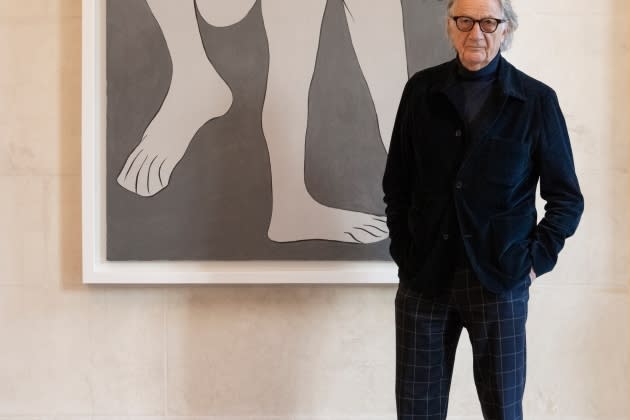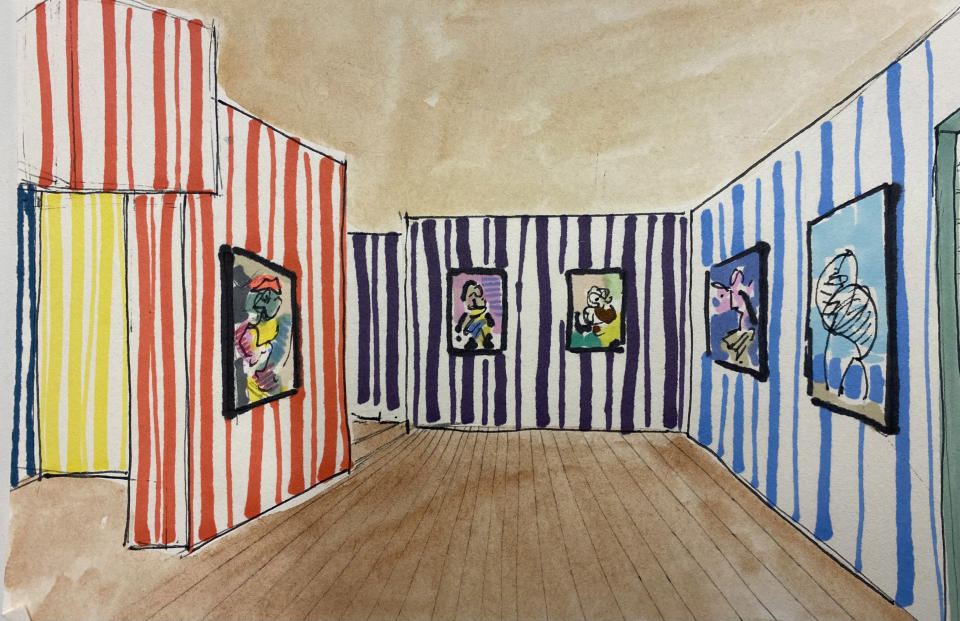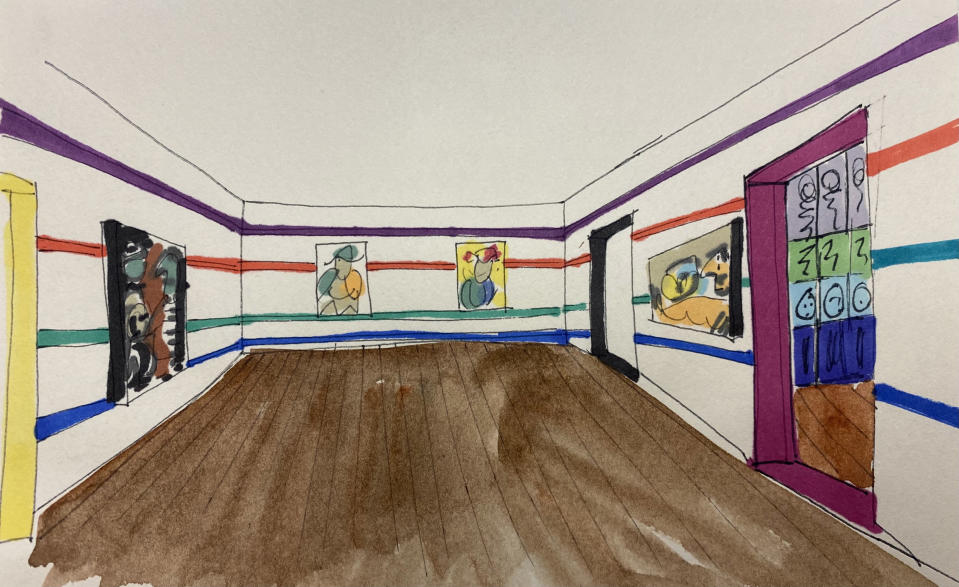Paul Smith Shows Pablo Picasso in a New Light
- Oops!Something went wrong.Please try again later.

PARIS — Paul Smith was given “carte blanche” to art direct a new exhibit at the Musée National Picasso. But instead of the traditional white walls typically used at galleries or museums, the British designer went with vintage wallpaper, posters, collages of plates and colorful stripes set against some of the painter’s most famous artworks.
A room dedicated to the iconic “Les Demoiselles d’Avignon” is drenched in Paul Smith pink.
More from WWD
“I was thinking, ‘If Mr. Picasso was around, would he think this was fun? Would he think this was tongue-in-cheek? Would he think this was a very modern way of showing his work?’ And hopefully he would,” Smith told WWD.
The exhibit, set to open March 7, marks 50 year’s since Pablo Picasso died in his home outside of Cannes, in the south of France, and Smith wanted to show his works in new, inventive — and Instagrammable — ways.
“They wanted to get people to think about it in a new light,” Smith told WWD. “I’m not an art historian, and I’m not somebody who has a great knowledge of Picasso’s work. And so it was very much about the exhibition being very much part of today’s world, which is very visual because everybody has a telephone and everybody takes photographs all the time, so it’s a very visual exhibition.”
The exhibit is curated by Cécile Debray and Joanne Snrech, while Smith art directed the displays.
It works through Picasso’s periods, from Cubism through the Blue Period of the early 1900s, with each room a more immersive, rather than observational, experience.
A room devoted to the Blue Period is swimming in shades from floor to ceiling which offsets the paintings, including Picasso’s famous self-portrait.
Picasso also used found items in his own works, particularly sculptures which he assembled with objects. The technique blurred the lines between artwork and object, and used decorative motifs in his paintings, which Smith plays on here with his use of wallpaper and plates.
Early in his career, Picasso studied animals in still lifes, while later he worked in ceramics, on display in the exhibit against a bucolic green. Another room filled with his art depicting bullfighting, including his La Tauromaquia, is drenched in blood red.

Being asked to curate the exhibit was “unbelievable,” Smith said. “They said they were looking for something very different to what has been done before in that museum or in any museum. What a humbling task and wonderful, amazing and quite overwhelming request.”
Smith came to the museum’s attention in part for his fashion design, as well as his work on other types of design projects, including hotel suites, bikes and furniture. “The way I see things is not always done the obvious route,” he said.
The request came in 2018 with the work beginning at the end of 2019. Due to the pandemic, Smith started his work remotely, poring through the 200,000-piece strong archives of the museum.
Debray moved into the president’s post at the museum in late 2021, and invited contemporary artists including Guillermo Kuitca, Obi Okigbo, Chéri Samba and Dior muse Mickalene Thomas to join the exhibition with paired works.
Smith is well aware that his pop culture approach might be a bit too unconventional for some. “I don’t expect everybody to think it’s great. I am quite sure that some people would prefer it portrayed in a more traditional manner, but that wasn’t the brief. The brief was ‘a new light.’ But, obviously, people have strong opinions about things,” he said.
Working on the exhibit was a bit of an education for him as well. “I didn’t really know how modern Picasso was and how he really embraced new ideas,” Smith said. “A lot of creators in fashion or writers, photographers often pick up on a particular way of doing things, and then that is something that stays with them throughout their career.”
Picasso was not afraid to completely change his style, and experiment with other mediums, including pottery and ceramics. “He was always on the move and always interested in new ideas and themes.”
More than design influences, Smith drew comparisons with his own career, citing his position remaining an independent company at a time of industry consolidation.
“That has stronger parallels with Picasso in the fact that you have to keep thinking and rethinking new ideas to still be relevant in fashion,” he said, adding that he tries to keep a childlike curiosity despite being in the industry since the 1970s. “That constant interest in newness and doing things differently has definitely kept me and my business having relevance after all these years, and certainly that is true about Picasso himself.”

Smith cited the Cubist depiction of Paris’ Sacré-Coeur cathedral as one of his favorites. “It was very brave and radical at the time,” he said. The geometric shapes and color palette of cream and gray earned it a showstopping place as one of the first pieces in the exhibit.
Smith just designed a suite at Brown’s Hotel in London, as well as a new project with longtime partner Mini cars. He’ll be presenting his latest women’s collection March 6, the morning after the exhibit’s opening party.
The exhibit, he emphasized, is an independent piece of work, not tied to his fashion designs which instead plays on the textiles that he seeks out at fabric fairs.
“I’m very humbled; it’s certainly been a very emotional thing to do,” he added. “To be privileged to be in that empty museum in the morning with these masterpieces was pretty amazing.”
The exhibit “Picasso Celebration: The Collection in a New Light” will run from March 7 to Aug. 27.
Best of WWD

